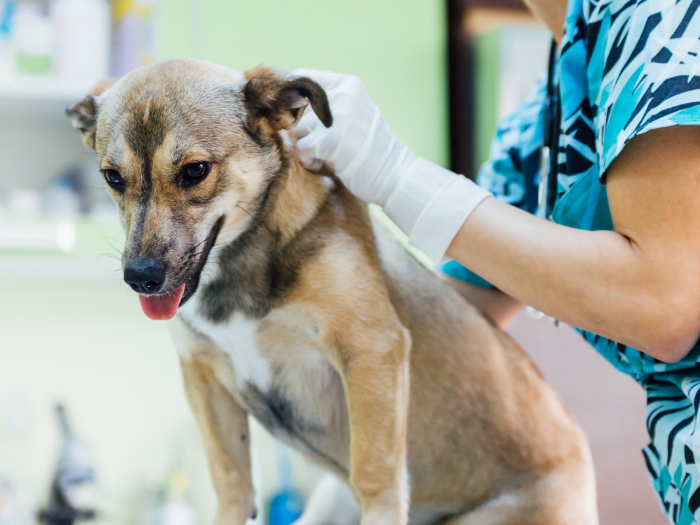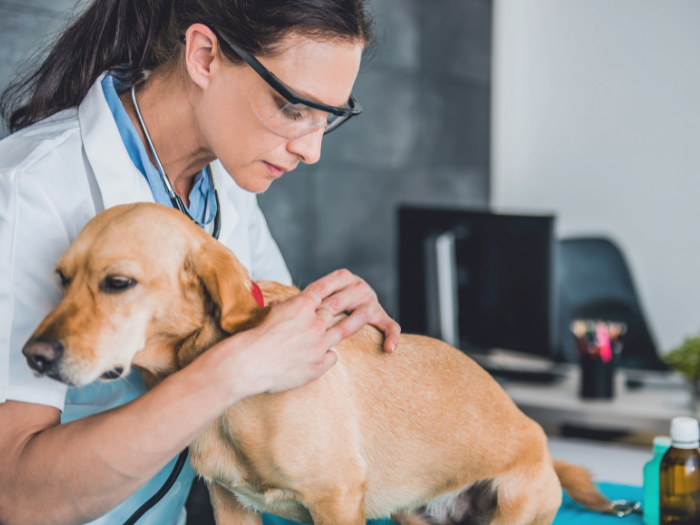Understanding Dog Warts: Signs, Causes, and Treatment
For those of us lucky enough to share our life with a dog, petting our beloved pet is one of life’s daily joys – unless we feel dog warts or other lumps and bumps. Then what’s usually a simple pleasure can make our hearts sink with worry.Is it a benign tumor, like a wart on a dog, or is it something scarier like cancer? For that matter, how concerned should we be about a dog with warts? And can we catch warts from our dogs? Read on to learn more.
What do dog warts look like?
Warts can affect any dog, but they’re most common in puppies and younger dogs because their immune systems are immature, and adults who are immunocompromised (from disease and/or immunosuppressive medication).Dog warts are typically found around or in the mouth, on the trunk, near the genital area, on the eyelids, and on the feet, according to Natalie Marks, DVM, CVJ, veterinarian at Blum Animal Hospital in Chicago, Illinois, and owner of Marks DVM Consulting.“They can appear commonly like pink, fleshy small cauliflowers, but can also be flat plaques and even ulcerate and bleed if irritated,” she told All Pet Voices.Warts are essentially benign tumors, but they can be pesky and even problematic. Dogs might nibble on them, and bloody wounds can get infected. Plus, warts can be painful if inverted (i.e. they grow inward), especially when found on a dog’s paws – which can lead to limping and lameness.It hurts to see our dogs hurting, so identifying dog warts, lumps and bumps early can be a game-changer for both you and your dog. That’s one reason why we encourage you to do a body scan – examining your dog’s body from head to toe, nose tip to tail primarily through touch and sight – once a month.We make it easy to remember when you sign up for Pet Health 5. We’ll send you a checklist to monitor 5 health signs on your dog (or cat) and log the results. It only takes 5 minutes and will help you stay on top of any changes in your pet’s skin and overall health that might require veterinary care.
What causes dog warts?
Prevention is always the best approach when it comes to any health-related concerns or conditions. However, you will first need to understand what causes dog warts in order to prevent them. Warts are caused by a papillomavirus, so they’re also called “papillomas.” Each virus is species-specific, meaning it only transfers from dog to dog, cat to cat (though warts are much less common in cats), or human to human.So don’t be afraid to pet your dog – you can’t catch warts from him or her!However, within a species, the papillomavirus is definitely contagious. Your dog can catch the virus through play or other contact with an infected dog, or from the infected dog’s toys, food, water bowl, blankets, bed, and other furniture or items.“These viruses are very hearty in the environment and can live for extended periods of time,” Dr. Marks noted.Dogs can get infected through cuts and abrasions on their skin, so if your pet has a wound or rash, you might want to avoid potential exposure at crowded places like dog parks and doggy daycares until they’re healthy again.The virus can also enter through bites from fleas, ticks, and mosquitoes, which is just one more reason to give your dog preventive medications for parasites.Of course, if your own dog has warts, you should be considerate to other pet parents by keeping them away from puppies and dogs as much as possible until the situation resolves.
Treatment for Dog Warts
Some warts just go away in a month or two as dogs develop better immunity, but since they can be confused with more serious lumps and bumps like cancerous tumors, the rule of thumb is “better safe than sorry.” Your dog may require further treatment for dog warts or other lumps and bumps. “I recommend having your veterinarian assess every lump or bump on your dog’s body,” Dr. Marks urged. “While most papillomas are painless and regress with time, it’s important to have it assessed via telemedicine, or better, a standard exam.”For a diagnosis, your veterinarian may perform a fine-needle aspirate by using a small needle to suction cells from the concerning spot to analyze under a microscope. Sometimes a biopsy – removing a sample of tissue to observe under the microscope – is necessary.Dr. Marks particularly recommends aspiration for dogs with warts that bleed, are painful, or interfere with daily functions like eating and sleeping.“With patients that have persistent or painful tumors, surgical removal is often necessary,” she said. “It almost always is done in general practice. In rare instances, a surgical specialist might need to get involved if it’s an inverted papilloma in a tricky place on the foot.”Recovery is typically 7-10 days, according to Dr. Marks. Depending on the location of the removal, your dog may wear a Comfy cone and/or a bandage while they heal since it can be so tempting for them to nibble and bite at their sutures (the threads used to close a wound). Then you can get back to having fun adventures together!Doing our best to prevent and treat any health issues our dogs experience, including dog warts, is an important way to care for the animals who earned the moniker of “man’s best friend.” After all, they wag their tails with delight when we come home from work (or from a quick trip to the grocery store) and offer loyal companionship on walks and hikes. Our pups snuggle on the couch, gaze into our eyes, and even forgive us when we give them a bath after rolling in something stinky.Dogs love us unconditionally. So as the saying goes, do you return the favor by loving your dog “warts and all”? We’d love to hear what you love about your dog in the comments below! Performing a body scan is one of the five vital steps to take each month to keep track of your pet’s health. We make it easy to remember to do when you join us in our Pet Health 5 movement. Just sign up and we’ll send you a reminder on the 5th of every month with a checklist of what to do and how to do it. Then you just take a little time to check your dog’s health stats and log them.Catching a lump or bump early can help save your dog’s life – or at least make them more comfortable. You can protect your dog’s health and happiness by signing up for Pet Health 5.
About the Author: Award-winning journalist Jen Reeder is a self-proclaimed dog nut and former president of the Dog Writers Association of America. She writes bios of adoptable dogs and cats as a volunteer for the nonprofit PawsCo. Jen works from her home office in Colorado, which she shares with her husband and their beloved rescue dogs, Rio and Peach.